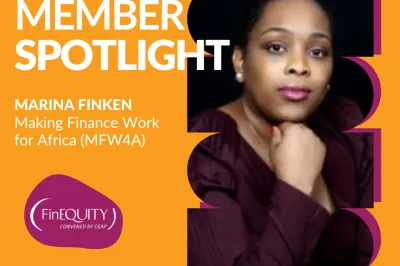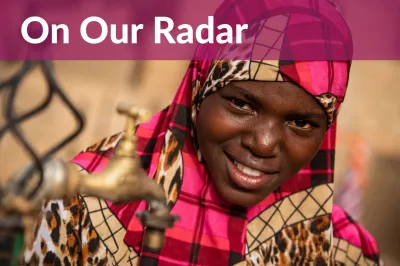Beyond Outreach: Integrating Gender in Business Processes for Financial Inclusion

A process-focused approach to gender and power dynamics
Inclusive financial institutions (IFINs), such as microfinance lenders, have long focused on expanding access to services for women. By offering tailored products and targeted outreach, many of them have been successful. In Developing World Markets’ (DWM) investment portfolio of roughly 80 IFINs, 77% of the total end clients are women. But looking one level deeper at our data revealed that there’s much more to be done if we truly want to remove biases and barriers for women to fully benefit from financial inclusion. For example, average loan sizes are still smaller for women borrowers than for men, and while many IFINs have a predominantly female client base, their staff, management and boards are often largely male.
Using an assessment tool co-developed with Criterion Institute, DWM analyzed how eight IFINs in Armenia, China, Colombia, Georgia, India, Panama and Sri Lanka integrated three gendered power dynamics into four core business processes. The focus on process helps systemically integrate gender considerations and reveal opportunities to enhance both equity and business success.
A great example comes from one of DWM’s investees, Ashv Finance in India. Ashv designs credit products to match the needs of micro, small and medium-sized enterprises to unlock their growth potential. With their inclusive focus, Ashv designed and launched a loan product specifically for women entrepreneurs called the Mansha Loan (meaning ‘as per your wishes’ in Hindi). These collateral-free and lower-priced loans are disbursed within five days of application, utilizing technology for an efficient and hassle-free underwriting process. This loan product is specially designed to meet a highly underserved market, with over 90% of women entrepreneurs in India never having availed of finance from a formal financial institution. To scale outreach to women, the product is offered at a 1% discount despite having the same risk threshold as Ashv’s other business loans (as measured by expected repayment rates).
Despite its thoughtful design, however, this gender-responsive product faced challenges in uptake during its pilot phase. The gender and power dynamics analysis revealed that the distribution channels used may have impeded outreach, highlighting the need for Ashv to better understand how its sales channels can better reach women. The use of existing distribution channels such as third-party sales agents likely reinforced traditional biases and thereby undermined Ashv’s goals of expanding access to credit for women entrepreneurs. Based on these findings, Ashv is updating its marketing and distribution channel strategy with a gender lens and evaluating activities such as outreach partnerships with ecosystem players (e.g., women’s empowerment organizations) and marketing plans for increasing awareness about the product and its benefits in the next stage of product deployment.
While take-up has been slow for the reasons stated above, despite the COVID-19 headwinds, collection efficiency is high (96%), validating Ashv’s underlying hypothesis that women entrepreneurs constitute a more credible credit risk segment.
Analyzing four core business processes
The processes used to design and distribute financial products—and the power dynamics underlying those steps—have significant effects on social and financial outcomes. The Criterion-DWM assessment tool analyzed the following four core business processes of IFINs.
- Product and Channel Design: Assess whether the development of products and the determination of distribution channels used to disseminate these products recognize structural constraints or barriers to access by gender.
- Loan Origination: Assess whether client outreach and intake processes recognize bias and mitigate or perpetuate socially exclusive practices.
- Credit Assessment and Servicing: Assess whether the methods used to evaluate the eligibility of borrowers or clients and service loans reflect gender-balanced decision-making and incentives, enabling gender-equitable access to services.
- Governance and Management: Assess how gender has been integrated into processes related to human resources administration and oversight of business strategy and operations.
Moving from products to systems
The three cross-cutting power dynamics embedded in these processes are access, incentives, and decision-making. Rigorous gender analysis of these processes can unlock additional financial upside, expose hidden and pervasive risk and/or uncover new opportunities to drive equitable social outcomes.
Across the eight companies that undertook this analysis, product and channel design was the strongest area on average, followed by loan origination. This finding reflects the progress the financial inclusion sector has made (albeit incomplete) in applying gendered analyses to design gender-sensitive products. The relative strength in the loan origination category also shows that to some extent, financial institutions are addressing bias in underwriting that leads to gender gaps in loan approvals.
Overall, the portfolio companies assessed scored lowest in the ‘governance and management’ category; all could improve some aspect of their hiring, talent management and oversight practices. The second-weakest category was credit assessment and servicing. Even companies that already collect sex-disaggregated data, for example, have not always closed the feedback loop by analyzing that data to draw conclusions about how to enhance business value and gender equity. Some companies could also implement more flexible policies that are responsive to the different levels of access men and women have, such as access to resources that can be used as collateral, or formal credit history.
Combined with gaps in the other two categories (loan origination and credit assessment and servicing), the broader implication is that IFINs need to move from discrete products or programs focused on women to a more systematic integration of gender in their businesses. Providing appropriate and useful products to women clients is crucial, and DWM is seeing real progress. Next, financial institutions need to analyze their own business processes to ensure they support, rather than undermine, gender-equitable outcomes.


